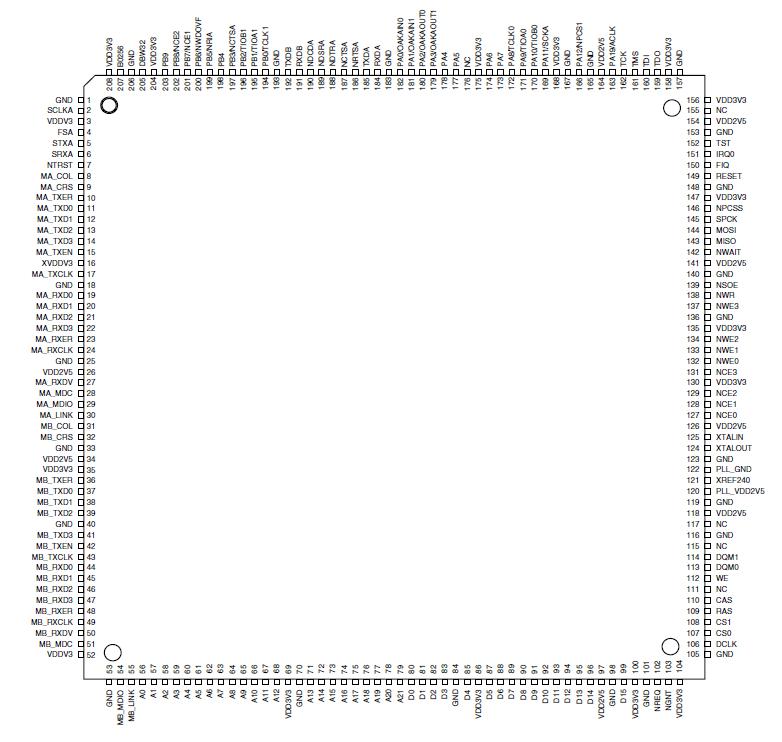Features: • ARM7TDMI™ ARM® Thumb™ Processor Core
• One 16-bit Fixed-point OakDSPCore®
• Dual Ethernet 10/100 Mbps MAC Interface with Voice Priority
• Multi-layer AMBA™ Architecture
• 256 x 32-bit Boot ROM
• 88K bytes of Integrated Fast RAM
• Flexible External Bus Interface with Programmable Chip Selects
• Codec Interface
• Multi-level Priority, Individually-maskable, Vectored Interrupt Controller
• Three 16-bit Timer/Counters
• Additional Watchdog Timer
• Two USARTs with FIFO and Modem Control Lines
• Industry-standard Serial Peripheral Interface (SPI)
• Up to 24 General-purpose I/O Pins
• On-chip SDRAM Controller for Embedded ARM7TDMI and OakDSPCore
• JTAG Debug Interface
• Software Development Tools Available for ARM7TDMI and OakDSPCore
• Supported by a Wide Range of Ready-to-use Application Software, including Multi-tasking Operating System, Networking and Voice-processing Functions
• Available in a 208-lead PQFP PackagePinout Description
DescriptionThe AT75C220, Atmel's latest device in the family of smart internet appliance processors (SIAP), is a high-performance processor designed for professional internet appliance applications such as the Ethernet IP phone. The AT75C220 is built around an ARM7TDMI microcontroller core running at 40 MIPS with an OakDSPCore co-processor running at 60 MIPS and a dual Ethernet 10/100 Mbps MAC interface.
In a typical standalone IP phone, the DSP handles the voice processing functions (voice compression, acoustic echo cancellation, etc.) while the dual-port Ethernet 10/100 Mbps MAC interface establishes the connection to the Ethernet physical layer (PHY) that links the network and the PC. In such an application, the power of the ARM7TDMI allows AT75C220 to run a VoIP protocol stack as well as all the system control tasks.
Atmel provides the AT75C220 with three levels of software modules:
• a special port of the Linux kernel as the proposed operating system
• a comprehensive set of tunable DSP algorithms for voice processing, tailored to be run by the DSP subsystem
• a broad range of application-level software modules such as H323 telephony or POP-3/SMTP E-mail services

 AT75C220 Data Sheet
AT75C220 Data Sheet







